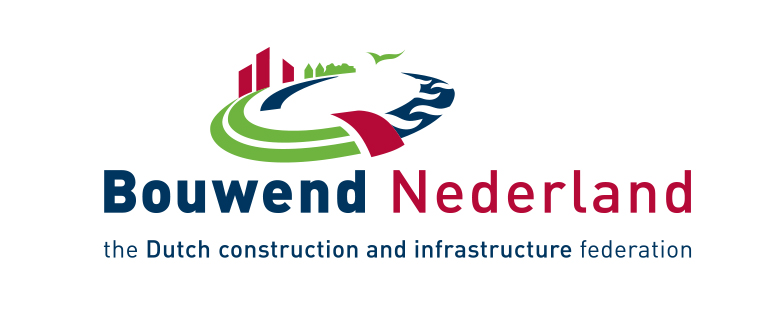Overall construction activity
Following five years of strong growth averaging 6% per year, the Dutch construction sector has experienced a contraction of 1.5% in 2020. This contraction will continue into 2021 with a decline in production volume of 3.5%. This decline is a consequence of two developments:
A major factor is the decline in the number of approved building permits in 2019. This decline was in part caused by the nitrogen emission ruling issued by the Council of State in May 2019. This ruling declared the procedures to issue permits for nitrogen emitting activities (including construction projects) close to vulnerable nature areas as unlawful, and the processing of permit applications has ceased until a new procedure is developed. This has affected a large share of new construction projects. The delays and cancellations which have resulted from the nitrogen emission ruling had a significant negative effect on the construction output in 2020, especially in new residential construction and new civil engineering projects.
Another negative impact came from the Covid-19 pandemic and its economic consequences. In order to mitigate the effects of the measures on the economy, the government introduced sizeable packages of measures to prevent the decrease of income and employment. This is a difference to other economic crises, as these support measures maintained the investment capacity at a level higher than usual.
As a result, the Covid-19 pandemic had a limited effect on the construction sector in 2020. After an initial shock in March/April, the sector did not fall back further. Orders and requests for quotations even showed signs of recovery. The reconstruction and renovation market was positively affected; both residential and non-residential renovation grew in 2020. The growth in residential renovation can be explained by the fact that the protective measures introduced by the government restricted leisure spending, like vacations and other leisure activities. As income remained at the same level, people decided to shift their spending towards other fields such as renovation. One of the drivers of non-residential renovation is legislation which aims to improve all office buildings to energy label C.
Residential construction
Extensive support measures by the government during the Covid-19 pandemic have kept most households’ incomes at an unchanged level. Also, consumer spending shifted from leisure towards other sectors such as construction. Therefore, the Covid-19 pandemic had a limited influence on residential construction.
The residential market was characterised by price increases of around 10% in the last few years. An important issue is the lack of new residential construction. On average, demographic developments create the need for around 85,000 new houses each year. The number of new building permits does not meet these needs. In 2020, around 65,000 permits were issued. For 2021, their number is expected to reach 68,000.
In order to address the inadequate volumes of residential construction, the government and organisations of developers, investors, housing corporations, construction firms, home owners and tenants had signed the National housing agenda 2018-2021 in May 2018, committing themselves to increase efforts in order to reduce housing shortages. The aim is to realise 75,000 dwellings per year. However, due to the nitrogen emission ruling of the Council of State, these amounts will not be achieved in 2020 and 2021.
Partly due to the decline in building permits in 2019, new residential construction contracted by 9.5% in 2020 and will remain at the same level in 2021. A very strong demand and the easing of restrictions imposed by the nitrogen emissions ruling will ensure a strong recovery of around 8% in the following years. Residential reconstruction and renovation increased by 3.5% in 2020 thanks to large scale renovations and an increase in DIY activities. This segment will contract by 6.5% in 2021, partly because some of these activities have been brought forward during the lockdown. The output will recover in the following years. Residential maintenance work declined by 0.5% in 2020 but will increase by 0.5% in 2021.
GDP 2020
BILLION
POPULATION 2020
Total investment in construction in 2020
BILLION
Non-residential construction
New non-residential construction has increased by almost 35% between 2016 and 2019. This expansion is mainly attributable to a powerful growth in the construction of industrial buildings (which increased by 170%) and storage buildings (which doubled). The construction of other building types also increased albeit to a much smaller extent. The effects of the nitrogen emissions ruling and the economic consequences of Covid-19 have led to a drop of new construction output by 5.5% in 2020. This decline will continue in 2021 with a further contraction of 5%.
Non-residential renovation and reconstruction increased by 4.5% in 2020. In 2021, output will contract by 5.5%. Non-residential maintenance works declined by 1% in 2020, but will recover with a growth of 1% in 2021.
Civil engineering
The output by volume in the civil engineering sector rose by 1.5% in 2020. New construction and reconstruction grew by 1% in 2020. Increasing by 3%, works commissioned by corporate clients drove this growth. The output volume of works commissioned by authorities contracted by almost 1%. Maintenance output grew by 2.5% in 2020. In 2021, the civil engineering market will decline by 4%. New construction and reconstruction will decline by 4.5%, while maintenance output will decrease by 3%.
| Per cent variation of investment in real terms on previous year | |||||||
| investment Mln. € fixed prices | |||||||
| Sectors | 2020a | 2017 | 2018 | 2019 | 2020a | 2021b | |
| 1. | Building | 58,479 | 5.9 | 7.9 | 4.7 | -2.5 | -3.1 |
| 1.1. Housebuilding | 32,154 | 8.2 | 7.9 | 2.5 | -3.1 | -2.4 | |
| 1.1.1. New | 15,203 | 11.6 | 11.1 | 2.6 | -8.9 | -0.4 | |
| 1.1.2. Renovation | 16,951 | 5.5 | 5.2 | 2.4 | 2.1 | -4.1 | |
| 1.2. Non residential (c) | 26,325 | 3.1 | 8.0 | 7.6 | -1.7 | -3.8 | |
| 1.2.1. Private | N/A | N/A | N/A | N/A | N/A | N/A | |
| 1.2.2. Public | N/A | N/A | N/A | N/A | N/A | N/A | |
| 2. | Civil Engineering | 17,479 | -5.3 | 3.6 | 2.9 | 1.6 | -4.0 |
| (1 + 2) | Total Construction | 75,957 | 3.0 | 6.9 | 4.3 | -1.6 | -3.3 |
| a: estimate - b: forecast - c: incl. R&M | |||||||
| Number of building permits in residential construction | |||||||
| 2017 | 2018 | 2019 | 2020a | 2021b | |||
| single dwelling | N/A | N/A | N/A | N/A | N/A | ||
| collective dwelling | N/A | N/A | N/A | N/A | N/A | ||
| other types of dwelling | N/A | N/A | N/A | N/A | N/A | ||
| Total | 70,243 | 70,714 | 59,217 | 65,000 | 68,000 | ||
| (Collective dwellings and other types of buildings: in number of flats) | |||||||



































